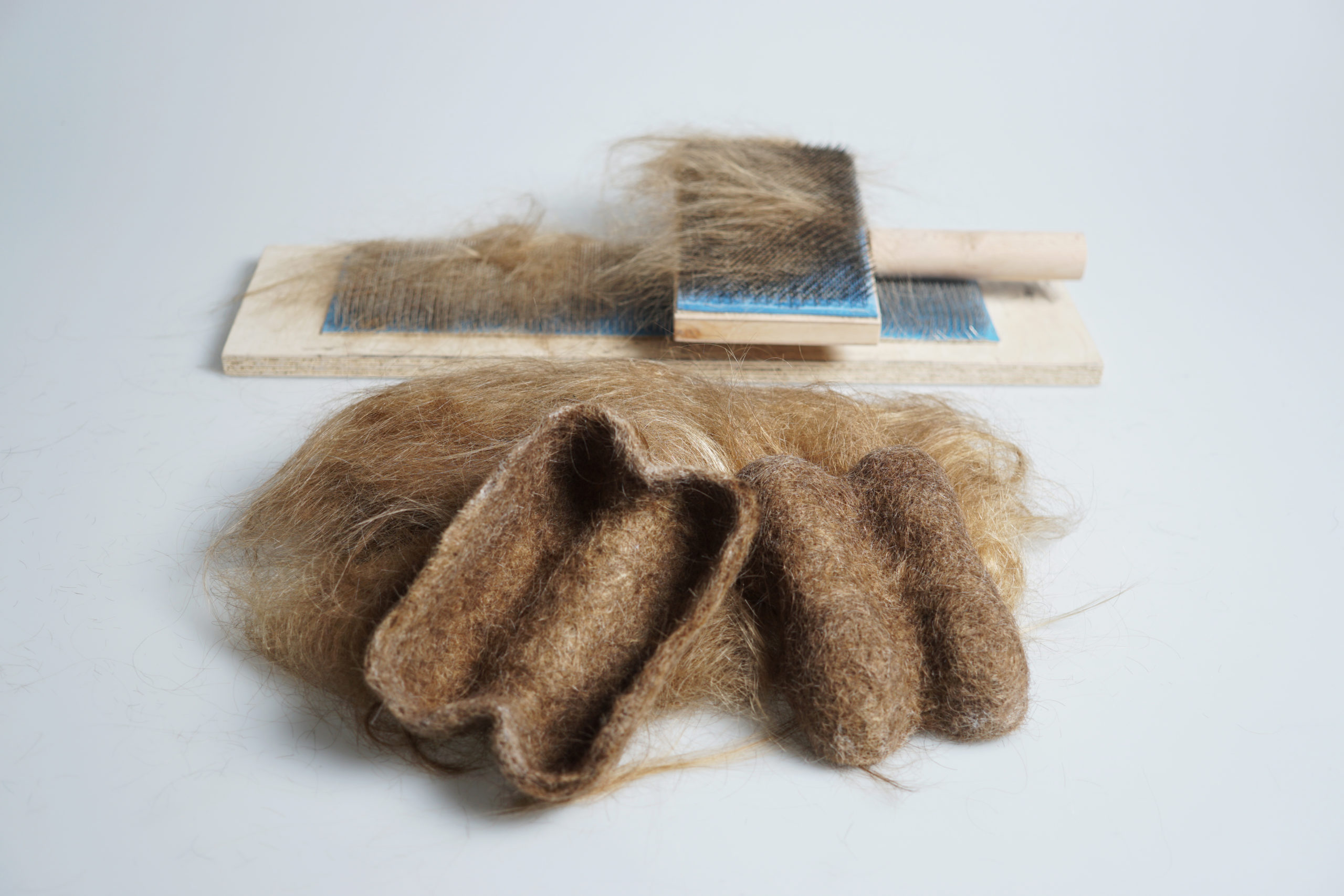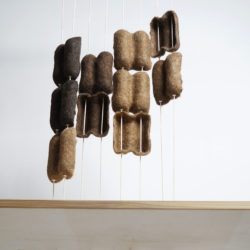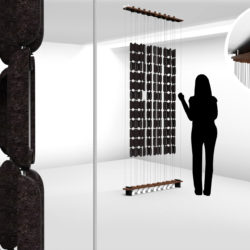Haarige Angelegenheit or Hairy Times
Description
Re-use of human hair in product design to support circularity and address climate change. SDG'12 My solution is a human-hair based panel, designed for a western audience, that can be installed for acoustic insulation, and air quality enhancing purposes, as keratin filters particulate matter. A product that protects humans while being mindful of the environment. A product that takes a wasteful resource and re-uses it to something purposeful, thus including humanity into the cycle and pushing for responsible and circular production and consumption.What is the Topic?
Human hair is generally seen as waste and unattractive the moment it is cut off. It is getting burned and releases toxins into the atmosphere because it takes months or years to biodegrade. My research led me to a globally abundant material: keratin. It appears in different structures, such as nails, feathers, wool, horn or hair and mainly evolved as a protection mechanism. When burned, it releases many toxins such as sulfur dioxide, ammonia, phenols and carbonyl sulfides into the atmosphere. To protect people from that, hair and their special properties like filter oil, filter chemicals, provide nutrients, being water repellent, filter particulate matter, store heat, or absorb sound can be used to build new products, inspired by biomimicry. The main question was thus how to build a product that uses these traits in a circular and socially responsible way. There is a critical history behind the human hair as a resource. Shaving off, and using prisoners hair in world war 2 in Germany, poverty in India leading to sales of hair becoming a billion-dollar industry, or the hair mafia in Venezuela who cuts of hair from people in the middle of the street to sell it at high prices. Ethical concerns around hair collection can be covered, when given voluntarily by individuals and collected by hairdressers. IMAGINE it would just be a material that could be processed like wool. Thinking about our planetary boundaries and shrinking natural resources, we should focus more strongly on the C2C Principle. Human hair is locally available all over the world, and growing one cm per month. In the case of Berlin that means ~ 364.482kg/year, ~ 30.373kg/months, ~7.593kg/week.
Why does it look like this?
The waves are necessary for stability, which are created with a lot of pressure and friction during the felting process.
What is special?
The design can change through location. The only thing important is, to value the resource and keep it in our cradle to cradle principles. Without just burning it.
What is new?
Human hair is not associated as resource like wool, which could be produced and used as a material. No it is generally seen as waste and unattractive the moment it is cut off. The hair is shining in a new way because of the felting technique and maybe not that unattractive anymore.




